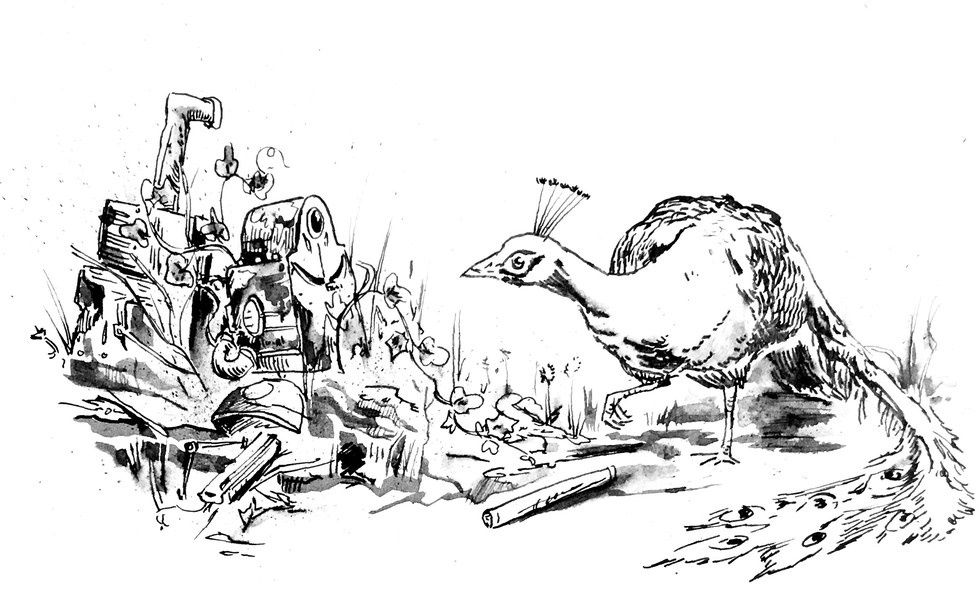For those of you unfamiliar with the Instagram phenomena, #inktober, it's a challenge for artists to post one drawing in ink every day for the month of October. It was started by Jake Parker in 2009, and has since become a global sensation that's celebrated once every year.
This will be my first year actively committing to Inktober. You can follow my art and watch as Inktober unfolds, or follow my Inktober progress on Instagram. I've been thinking about it quite a bit, and I'm really excited to share what I've come up with with the world. For me, this project is a bit like crawling into bed after a long day. Returning to traditional art after working primarily digitally for a few months is refreshing (yes, I did try and zoom in on my paper... don't tell anybody.) and pursuing a single, specific theme of artwork is something I haven't really done since high school. So, without any further ado, I present The Weathered and the Winged.
For the next month, I'll be posting a drawing featuring a bird at the site of a decaying robot, for a total of 31 drawing all following this theme. The proud work of some inventor has in a sense, died, and is now under the apathetic gaze of a bird, the very symbol of fleetingness. I often start with a theme and then find inspiration, which might sound backwards. I think of it as discovering the inspiration my subconscious knew all along. Had you asked me at the beginning of this journey why I chose to draw birds and dead robots, I couldn't tell you. Now, however, I think I can shed some light on the matter.
The poem Ozymandius by Percy Bysshe Shelley has a lot to do with the ideas I'm exploring. If you haven't read it, I strongly recommend you follow this link. The traveler tells of the decaying wreck of a once great statue, and invites the reader to reflect on the futility of the works of man. In one sense, that's what a robot is. A robot is man's greatest effort to give life to something inanimate, and will ultimately be rendered to nothing. The skeleton of a robot signifies a death of a man's work and impact in a greater sense than an actual human skeleton would. The plants growing over the robot communicate neglect and affirmation that the world has moved on. The robot is not only dead, but forgotten.
The birds, then, become either the final crushing blow or the only hope for redemption.
The bird represents the closest relationship the robot has right now, and we as viewers understand their interaction as some sort of relationship. As humans, we see ourselves in the robot's dead eyes simply in the act of recognizing it as a face, but are met with the cold truth that the bird does not understand the robot to have a face. The robot is viewed as useless to the bird, acting as an impartial judge to bestow the final sentence: lost to history. There is a sense of dark irony, however. The bird's inability to recognize the robot sheds light on its inability to recognize death. The very shadow it observes is one that it is consigned to become a part of.
In Matthew 6:26-27, Jesus says of the birds "Look at the birds of the air; they do not sow or reap or store away in barns, and yet your heavenly Father feeds them. Are you not much more valuable than they? Can any one of you by worrying add a single hour to your life ?" Jesus uses the images of lilies, birds, and grass to communicate the Father's immense love for that which is so temporary. The image of the birds remind us that beauty exists in the present, and is not invalidated by death. Investing in the present and not letting tomorrow determine your happiness is something birds are able to embody perfectly, made possible through their very ignorance of death.
A drawing invoking post-glory day imagery conjures up feelings of wistfulness and nostalgia. However, the birds contain within them the simple truth that beauty does exist, even if fleeting. If God appreciates that which does not last, then our response to death cannot be wrapped up in submitting to overwhelming futility.



















